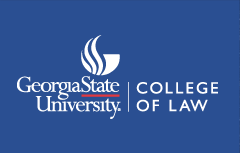Document Type
Article
Abstract
The use of an array of scientific techniques and technologies is now considered customary within criminal justice, with technological developments and scientific advancements regularly added to the crime investigator’s arsenal. However, the scientific basis, reliability, and fallibility of the application of such “forensic science” (and the resulting scientific evidence) continues to come under intense scrutiny. In response to apparently irremediable problems with the quality of scientific evidence in the United Kingdom (UK), the government created the role of “Forensic Science Regulator” in 2007.
The introduction of a regulator was intended to establish quality standards for all forensic science providers in the UK, create a level playing field in the forensic services market, and grant assurances that all providers were producing reliable and robust scientific evidence. A decade on, there remain questions over the effectiveness of this model of forensic regulation. Although there has been significant progress with initial aims and objectives and broad stakeholder engagement, the Forensic Science Regulator still lacks meaningful powers, and significant gaps in regulation remain.
Accreditation is not only inconsistent but may be superficial. The Forensic Science Regulator faces serious resource restrictions with debilitating limitations on the Regulator’s capacities, while wider austerity measures throughout the criminal justice system hamper efforts to raise standards in forensic science.
This Article will detail the first ten years of the Forensic Science Regulator, outlining successes and ongoing challenges. It will demonstrate that the UK model of forensic regulation has proven only partially effective at minimizing the risks associated with forensic science, while ensuring that the criminal justice system can continue to secure high quality forensic scientific evidence that is robust, reliable, and sustainable.
Recommended Citation
Carole McCartney & Emmanuel N. Amoako,
The UK Forensic Science Regulator: A Model For Forensic Science Regulation?,
34
Ga. St. U. L. Rev.
945
(2018).
Available at:
https://readingroom.law.gsu.edu/gsulr/vol34/iss4/3
Included in
Comparative and Foreign Law Commons, Criminal Law Commons, Criminal Procedure Commons, European Law Commons, Evidence Commons, International Law Commons, Jurisprudence Commons, Law and Society Commons, Law Enforcement and Corrections Commons, Public Law and Legal Theory Commons, Science and Technology Law Commons
